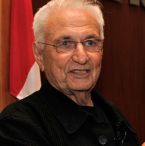Security Is Now An Undisputed Priority In The Design Of U.S. Embassies [Photos]
Security is now an undisputed priority in the design and refurbishment of U.S. embassies.
Intergrus Architecture in Spokane, Wash. knows a thing or two about designing them. The company is designing its 14th compound which will be located in Nouakchott, the capital of Mauritania.
The African embassy is the sixth on the continent by the firm and while no two embassies are exactly alike, each generally includes the same features.
The $130 million diplomatic mission in Mauritania will include a chancery office building, U.S. Marines residence, warehouse, maintenance facilities, perimeter security, access pavilions, recreation facilities and a utility building, according to The Spokesman-Review.
If that sounds all-inclusive, it's because it is designed to be. Mauritania is not particularly safe for U.S. citizens. The Department of State issued a travel warning for the country March 12, urging those who go there exercise extreme caution because of terrorist groups in the region, including al-Qaida in the Islamic Maghreb (AQIM).
AQIM has been operating in the country since 2005 and partaken in kidnappings and attacked several military installations in the country. Both the United States and United Nations have declared it a terrorist organization.
Although embassies are not there to combat terrorists, they can be targets of attacks.
Since the 1983 terrorist bombing of the U.S. embassy in Beirut, the U.S. government has undertaken a full reset of how embassies are designed and built, according to The Spokesman-Review.
To make embassies safe, creativity has been squeezed out of designs but Gerald Winkler, one of Intergrus Architecture's eight partners and the principal in charge of embassy work, still see artistic opportunity.
The company's first embassy, finished in 1996, was in Bogota, Colombia and is Winkler's favorite because the design incorporated the city's history and surroundings.
"Bogota got the most favorable comments since the design was so strongly influenced by the historical architecture of the 450-year-old city," Winkler told The Spokesman-Review. Even so, some residents then faulted the embassy for not seeming "modern" enough, he added.
In the future, it's going to be even harder to include artistic design elements.
Under the revised plans, the government has updated roughly 100 embassies and expects to build several dozen more by 2024, according to The Spokesman-Review.
Mark Dailey, the firm's principal in charge of design, said safety and security have become the guiding principle behind U.S. embassies.
On Sept. 11, 2012 an attack by an estimated 150 armed gunmen on the U.S. diplomatic mission in Benghazi, Libya left U.S. Ambassador J. Christopher Stevens dead. Many argue the compound should have been evacuated given the circumstances leading up to the attack; that no standard force at any embassy could have detoured the mob.
The Department of State has nearly 800 special agents for security but they are spread across more than 250 posts worldwide.
There's no doubt the incident, amongst the others in the past, sparked an interest in refocusing the design and modifications of U.S. embassies going forward.
As terror attacks continue across the globe, the guidelines and conditions required continue to evolve, Winkler told The Spokesman-Review.
He could not share any requirements specifically, but said "spook and tech" components, to ensure communications, remain intact and to detour intruders, are some of the things that have to be taken into consideration.
The materials used to construct the buildings and where they are located are also important. The types of windows and number of them are limited. Compounds are away from public areas and off main roads.
Critics argue that constructing embassies that are fortresses is sending the message that the U.S. is a closed democracy, according to The Spokesman-Review.
Here are some photos of U.S. embassies:














